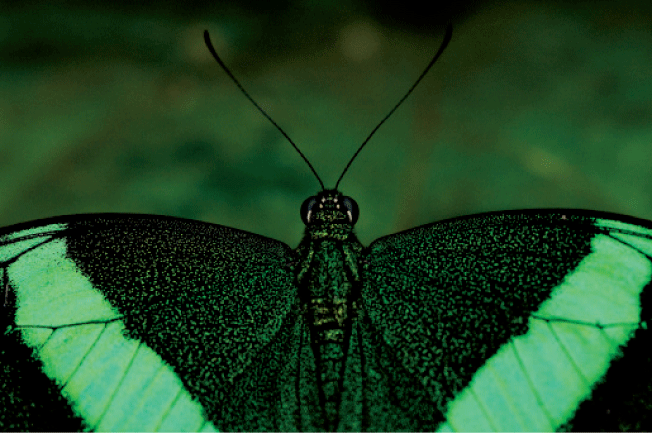
Coloring by Structure
 |
For years scientists have known that pigments aren't the only way butterflies get their brilliant colors.
Light can also bounce off structures and reflect hues through scattering or interference,
as with the blue of the sky or the iridescence of a soap bubble.
By :Luna Shyr
Photo: Paul Sutherland
Now a group at Yale University has identified one such structure in five butterfly species as a gyroid – a complex, three-dimensional form that is one of nature's most efficient ways of folding space. In the butterflies studied, from the Papilionidae and Lycaenidae families, the microscopic gyroids consist of chitin – the same material found in insect exoskeletons – and air pockets interwoven in a repeating pattern that resembles a network of three-bladed boomerangs.
The green color resulting from the interplay of scattered light helps warn off predators, says lead scientist Richard Prum.
Gyroids have superior optical properties, and the ability to synthesize similar forms could aid in the development of solar cells and insulation for fiber-optic cables. While the majority of butterfly colors are pigmentary – created when molecules absorb and reemit certain wavelengths of light – a variety of structural ones exist. So far green is the only known gyroid color, says Prum, "but I'm sure there are more."